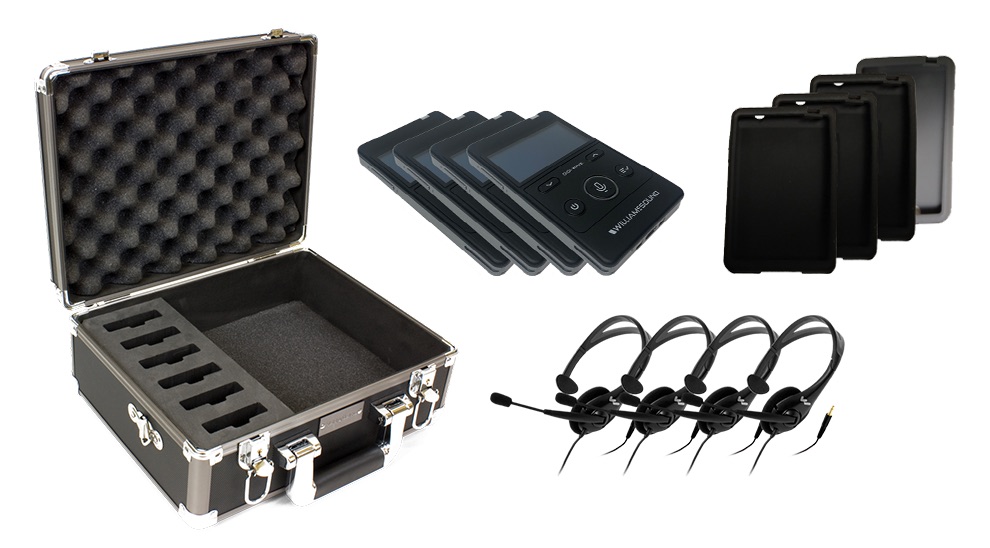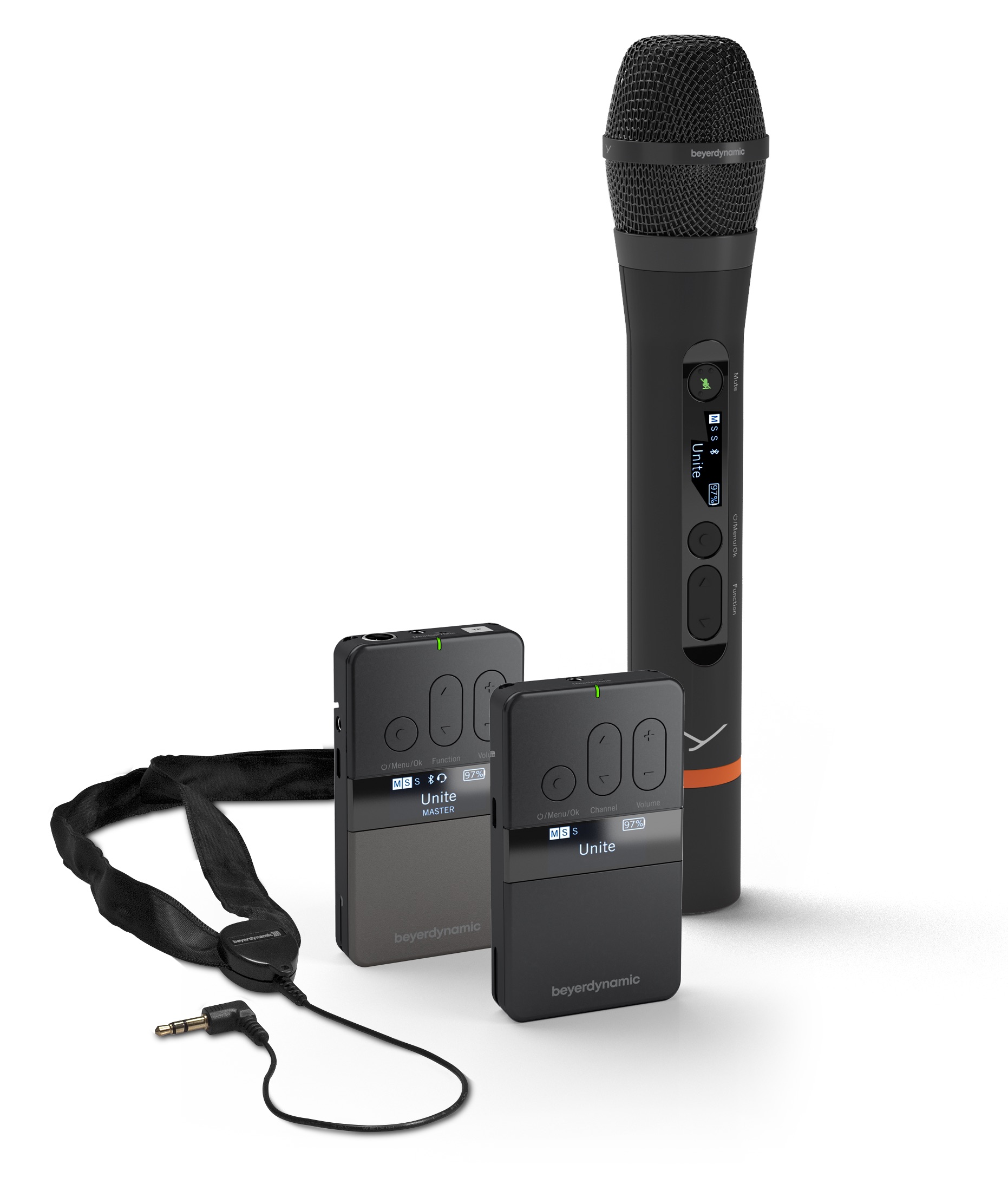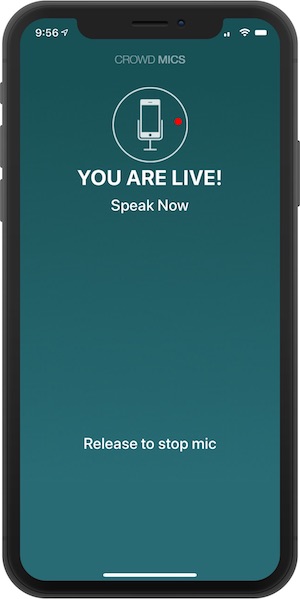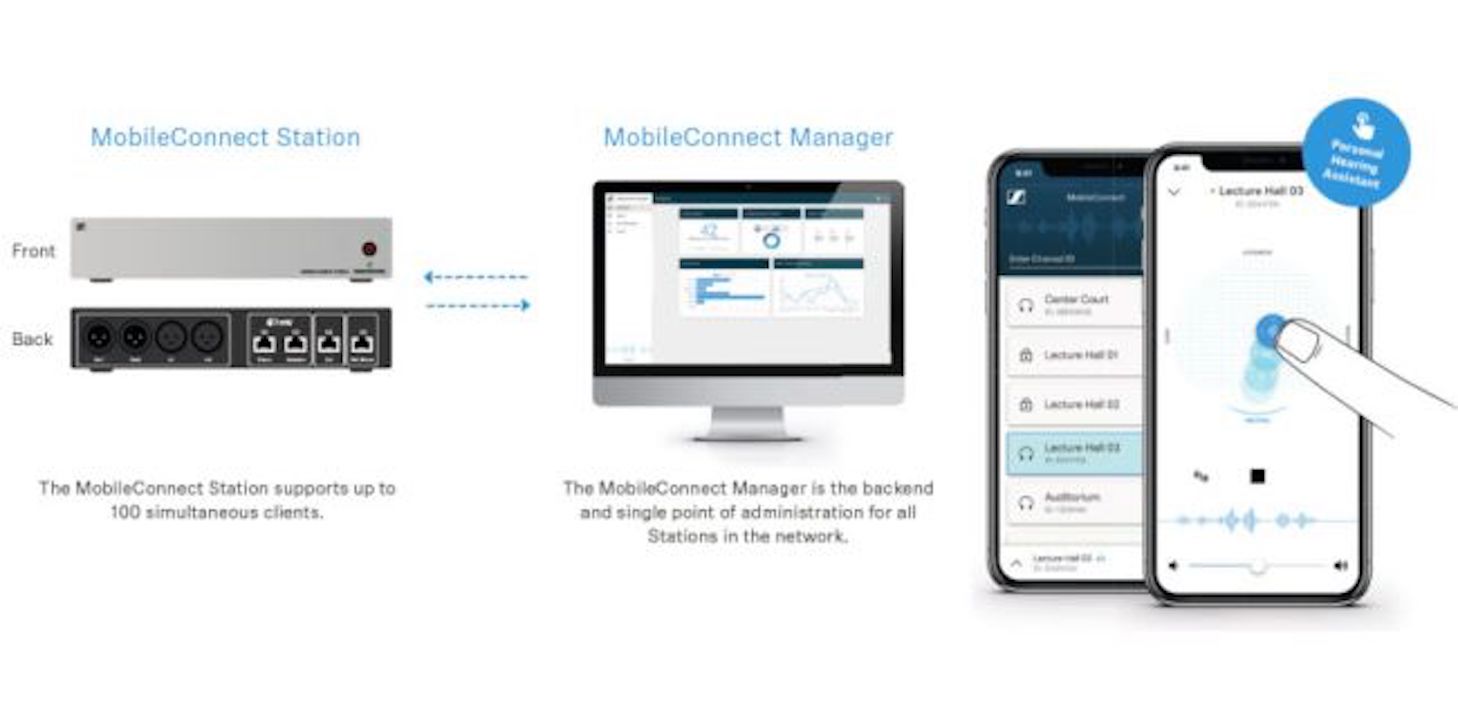How Assistive Listening Tech is Helping to Bridge Social Distance

In recent years, assisted listening technologies have become more affordable and accessible with Wi-Fi-enabled solutions that stream content to smartphones.
Today, assisted listening apps and hardware solutions that use transceivers, lanyards, microphones, and headphones are being used to help ensure speech intelligibility for socially distanced students, workers, courtroom attendees, and congregants.
“AV/IT managers must consider acoustics, ambient noise, and hearing loss when designing sound systems for these environments, as each of these elements impacts a person’s ability to hear and understand speech,” said Carrie Keele, channel marketing manager, Listen Technologies. Physical distancing and face covering measures intended to mitigate the spread of COVID-19 and keep people safe can be barriers to clear communication. “Masks muffle speech, hide facial expressions, and make it impossible for listeners to read lips and visually interpret what is being said. If employees or students are required to wear gloves (e.g., in a science classroom/lab), it could make it difficult for them to use complicated assistive listening devices.”
At Work
When COVID-19 hit, “work from home” was not an option for the 500 employees who produce high-performance alkaline batteries at Duracell’s nearly 500,00-square-foot high-tech production facility in Aarschot, Belgium. Face masks and physical distancing on an already noisy floor created barriers to communications, leading to safety concerns.
“COVID-19 has changed the way we do business indefinitely,” said Wouter Tielemans, an engineer at Duracell. The company deployed Listen Technologies’ ListenTALK, a mobile two-way communication system that allows frontline teams to maintain a safe distance and communicate. “ListenTALK is easy to use and causes no interference on our networks,” Tielemans said. “The speech intelligibility is surprisingly good allowing clear communications between employees on the production floor.”
“ListenTALK is a long-term solution,” Keele said. ListenTALK features a transceiver (combination transmitter/receiver) that employees wear on a lanyard around their neck. This is accompanied by a provided headset with microphone, or users may choose to use their own headphones or earbuds with built-in mic. There is nothing to carry, leaving employees’ hands free for the task at hand. Clear audio is transmitted within a 200-meter radius, so users can maintain safe distance and speak without shouting. The units are small, feature a simple “push-to-talk” button, and can easily and quickly be cleaned and disinfected between uses.
Bring Your Own Device
“Solutions like Listen EVERYWHERE let users stream audio over Wi-Fi directly to their smartphones and smart devices,” Keele said. “Users can listen via headphones or their Bluetooth-enabled hearing aids while they maintain safe physical distance from others.” Applications include assisted listening and multilingual audio transmission. “This technology is ideal for classrooms, meetings rooms, courtrooms, and houses of worship,” Keele said.
A daily selection of features, industry news, and analysis for tech managers. Sign up below.
Audio Considerations
We asked Tony Strong, national sales manager for Eastern U.S. of Williams Sound, to share his insights on key points to consider when setting up a room to ensure everyone can hear the conversation.
1. For intelligibility, audio pickup is critical: Are there mics in the room? If so, what kind and what style? Pressure zone microphones (PZM), condensers, lavaliers, or tabletop mics all have different pickup patterns and performance characteristics. Each will pick up different amounts of background noise or limit background noise. The main idea is to get the mic elements as close to the speakers’ lips that the environment will allow. Bad audio in = bad audio out.

2. Signal to noise ratio (SNR) is crucial: Once the audio is processed and sent to the DSP, the output destination characteristics can also vary. Audio for a live speaker sent to the zoom call may need different processing than a podium presenter audio being sent to live speakers in the ceiling for a 300-person audience. Whether the audio is being reproduced for a local audience or sent to a remote conferencing software, this SNR is important to the end listener.
3. Direct: Williams Sound audio systems send audio direct from the mics in the room through our transmitters (digital, FM IR, or loop) directly to the listener’s ear. This overcomes background room noise, poor audio pickup, and echo or distortion coming from ceiling speakers. A user who has their own volume control right in their own ear can have the best chance at the perfect listening experience, no matter the listening environment.
Product Spotlight
beyerdynamic UNITE

UNITE is a wireless communication system conceived for a range of applications. From tour guides, through voice transmission for speeches, to interpreter applications, assistive listening, silent PA, blind audio description coverage, and wireless intercom uses, UNITE offers a complete wireless solution.
Broadcasting in the DECT frequencies, which eliminates licensing fees, UNITE offers 24 simultaneous channels, a talk-back option for up to three speakers per channel, AES 256 encryption, and an optional Access Point to coordinate your system with Dante, creating a seamless communications solution. UNITE can be adapted to individual requirements with a range of available components. For example, the Unite AP4 expansion component via access point creates a robust solution for fixed installation applications.
This digital platform opens new possibilities for improved dialog between people, regardless of when, where, and how they wish to communicate. UNITE connects people—even over large distances (up to a 980-foot radius), language barriers, or with sensory disabilities.
Biamp Crowd Mics

Biamp Crowd Mics transforms every smartphone into a personal microphone and interactive response system via a free iOS or Android app. By downloading the free app, audience members have the ability to share their thoughts and questions with the room without having to pass a mic or awkwardly line up to speak. They can also share these same thoughts and questions via text, allowing those with an aversion to public speaking to still take part in the conversation.
For moderators, Crowd Mics means having complete control over the proceedings. The presenter app not only provides the ability to choose who speaks, but also allows a mic to be turned off at any time.
It’s just as important for students and meeting attendees to be heard as it is the presenter to be heard. With Crowd Mics Online, geographically diverse audience members can use their smartphones to connect with the event presenter as if they were in the same room.
Listen Technologies’ Listen EVERYWHERE
Listen EVERYWHERE from is a streaming solution for personal and assistive listening. The system supports the BYOD (Bring Your Own Device) trend and delivers crystal-clear audio via Wi-Fi to free apps on iOS and Android devices. Users are able to listen using headphones or directly through Bluetooth-enabled hearing aids. The customizable app can feature welcome videos, text banners, channel labels, and more. Listen EVERYWHERE is easy to add to a venue’s existing wireless network and presents an affordable, low-latency solution for drive-ins, outdoor spaces, and environments where ambient noise and distance make it difficult to hear audio clearly.
Sennheiser MobileConnect

Sennheiser MobileConnect is a Wi-Fi-based system for venues that enables low-latency transmission of audio content to mobile devices such as smartphones and tablets. With the real-time audio streaming server and the MobileConnect App, users can provide assistive listening for hearing impaired, audio description for blind people, interpretation channels, or audio for silent screens to venues as well as movie subtitles.
Sennheiser's MobileConnect system embraces the bring-your-own-device (BYOD) principle enabling users to utilize their own mobile devices on the MobileConnect Wi-Fi network. The system consists of a ConnectStation, a central unit for integrating different audio streams and transmitting them via Wi-Fi access points to the personal mobile devices.
Williams Sound Digi-Wave 400
The Digi-Wave 400 is a full-duplex, portable, wireless, two-way system for short range communication. The Digi-Wave is well suited for social distancing in a variety of applications including teaching, training, and interpreting. It can also be used in courtrooms, classrooms, hospitals, restaurants, and warehouses. In addition, the Digi-Wave 400 is a cost-effective alternative to other expensive two-way radios.
The Digi-Wave 400’s signal transmits through glass, curtain walls, and viewing rooms for social distancing. It employs secure, encrypted 2.4 GHz wireless technology contact-free communication. The unit is rechargeable and has a 150–600-foot range.

Cindy Davis is the brand and content director of AV Technology (AVT). She was a critical member of the AVT editorial team when the title won the “Best Media Brand” laurel in the 2018 SIIA Jesse H. Neal Awards. Davis moderates several monthly AV/IT roundtables and enjoys facilitating and engaging in deeper conversations about the complex topics shaping the ever-evolving AV/IT industry. She explores the ethos of collaboration, hybrid workplaces, experiential spaces, and artificial intelligence to share with readers. Previously, she developed the TechDecisions brand of content sites for EH Publishing, named one of the “10 Great Business Media Websites” by B2B Media Business magazine. For more than 25 years, Davis has developed and delivered multiplatform content for AV/IT B2B and consumer electronics B2C publications, associations, and companies. A lifelong New Englander, Davis makes time for coastal hikes with her husband, Gary, and their Vizsla rescue, Dixie, sailing on one of Gloucester’s great schooners and sampling local IPAs. Connect with her on LinkedIn.
